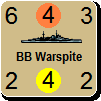Lokasenna
Posts: 9297
Joined: 3/3/2012
From: Iowan in MD/DC
Status: offline

|
quote:
ORIGINAL: Rusty1961
quote:
ORIGINAL: Lokasenna
quote:
ORIGINAL: Rusty1961
(unsupported assertions)
Here's some homework for you:
RAND Corporation from 2007 (admittedly 11 years old, but still relevant) - https://www.rand.org/content/dam/rand/pubs/monographs/2007/RAND_MG598.pdf
Slightly more updated from 2012 showing the annual appropriation (not cost) in 2013 dollars - https://www.cbo.gov/publication/43574. You could just browse the CBO site in general, there's lots of illuminating stuff on there.
I'll try really hard not to facepalm when you respond this time.
Not reading 153 pages on your more than likely bogus information.
I read a few pages of your outdated information and saw nothing about cost to train.
You remember my comment was in response to cost to train???
Now, you cited it, you tell me what page it is on.
Yep, more than likely bogus information from the RAND Corporation (a widely respected, knowledgeable expert firm in the DoD world) or from the Congressional Budget Office. In the first few pages it mentions that the cost assumptions from "hiring" a new recruit include the assumption that said recruit (as in all of them) will stay in for 20 years and retire with full pension.
quote:
ORIGINAL: Rusty1961
quote:
ORIGINAL: RangerJoe
But to say something that cost $100,000 in 1972 didn't appreciate in nearly half-a-century is wrong. The price of everything has skyrocketed.
No it hasn't. The price of computing and electronics, for example, has plummeted. And as RangerJoe says, you have to take into account what the training actually is. It's about what you get for what you spent. Training on and with 1970s tech vs. training on and with 2010s tech - it's vastly different what they are doing and the capabilities we are getting from that.
As for comments on inflation in general, no the CPI isn't somehow a completely inaccurate measure now. And no, it doesn't matter that the "basket of goods" has changed. And while there are many measures of inflation, and they all differ, they are all within spitting distance of each other and all are valid in a measure of "inflation is about (this much)" - you can quibble around the margins because they all measure it in different ways, but over the course of years they match up with each other pretty well. It's also largely irrelevant that there are small differences, as inflation is a measure for which you do not need precision.
The reason for the example of the computer being much cheaper now than when you bought your first one has nothing to do with inflation (or deflation).
quote:
ORIGINAL: Alfred
quote:
ORIGINAL: Lokasenna
quote:
ORIGINAL: Rusty1961
quote:
ORIGINAL: Lokasenna
quote:
ORIGINAL: Rusty1961
quote:
ORIGINAL: m10bob
I entered the U.S. Army in 1972 right out of college.
At the time, the cost to clothe, feed and train one enlisted recruit with at least one AIT unit (job skill school) was $100k.
Pretty safe to say today it must be $500,000.
It's not.
Y'all need to cite sources instead of pulling numbers out of your arses, or be subject to some serious heckling ridicule.
"U.S. Inflation Rate, $100,000 in 1970 to 2017. In other words, $100,000 in 1970 is equivalent in purchasing power to $631,752.58 in 2017, a difference of $531,752.58 over 47 years."
Ouch! That's going to leave a mark! Not that you have the intellectual honesty to admit you were wrong and I was correct, even on the low side.
And drop the fake southern accent.
You can't just take the cost in 1970 and adjust for inflation to 2017. You have to take the actual cost, right now. You didn't even cite a proper source for the original 100K.  Just m10bob's post. I'm not going to comment on your intellectual honesty; one need only look at your vast history of forum posts to get an idea of what you're about... Just m10bob's post. I'm not going to comment on your intellectual honesty; one need only look at your vast history of forum posts to get an idea of what you're about...
Non economists often fall into the trap of thinking that it is an easy exercise to adjust historical quantums by the inflation rate. The problem with such attempts is identifying the appropriate "inflation" rate.
The meaning of the economic term "inflation" is actually very loose. The precise economic impact which the term attempts to encompass is the "increase in the price level" between different time periods. Immediately there is a difficulty, viz the price level of what. The way economists get around this is by measuring different goods and services to arrive at different "inflation rates" which are applied to different situations as appropriate.
The most common inflation rate calculated and the one which is by far most frequently referred to is the Consumer Price Indicator. This is based on surveying a basket of goods and services. Within the basket, over time weightings are adjusted and what is included is altered. But no two consumers are identical in their purchase of goods and services and therefore, over time, one consumer may find the official CPI rate understates how much their "consumer" price level has increased whereas another consumer may find the official CPI rate overstates the increase of their price level.
For many economic entities, the CPI rate is quite meaningless for the basket does not include goods and services which they use or the weightings are quite wrong. There are therefore different "inflation" rates for industry. The DOD will have it's own internal inflation rates when entering into purchase contracts although here the complication is how does one accurately factor the qualitative improvement component of an increased price level.
It is therefore not simply a case of whether $100k was the correct figure in 1972, but rather what exactly did it cover and are those same items exactly still in play in 2018 with no qualitative improvements. In short, applying the CPI rate is fairly meaningless in of itself as the basket is very different.
There is one further relevant point. Assuming that a relevant inflation rate is applied and $100k in 1972 is equivalent to $500k today. So what, all it establishes is the nominal quantum has increased. The real cost of the economic activity has not increased when adjusted for inflation.
Alfred
What's your area(s) of actual trained expertise, again? Are you an economist?
|
 Printable Version
Printable Version












 Just m10bob's post. I'm not going to comment on your intellectual honesty; one need only look at your vast history of forum posts to get an idea of what you're about.
Just m10bob's post. I'm not going to comment on your intellectual honesty; one need only look at your vast history of forum posts to get an idea of what you're about. 
 New Messages
New Messages No New Messages
No New Messages Hot Topic w/ New Messages
Hot Topic w/ New Messages Hot Topic w/o New Messages
Hot Topic w/o New Messages Locked w/ New Messages
Locked w/ New Messages Locked w/o New Messages
Locked w/o New Messages Post New Thread
Post New Thread